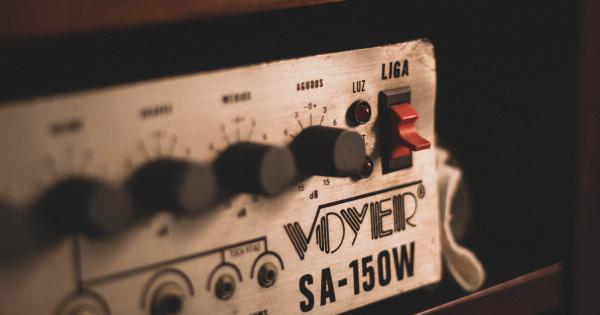Music has always been known for its ability to evoke emotions, trigger memories, and uplift spirits.
But did you know that your favorite tunes could also act as a painkiller? A new study suggests that music has the power to reduce pain and improve overall well-being. So, the next time you’re feeling down or experiencing discomfort, consider turning up the volume and letting your favorite melodies ease your pain.
The Healing Power of Music
For centuries, music has been recognized for its healing properties. Ancient civilizations, such as the Egyptians, Greeks, and Native Americans, used music and sound as a form of therapy.
In more recent times, music therapy has been developed as a formal discipline and is widely used in medical settings to promote healing and improve patient outcomes.
According to the study conducted by researchers at McGill University in Canada, listening to music can provide analgesic effects, meaning it has the potential to reduce pain.
The researchers discovered that when participants listened to their favorite songs, their brains released endorphins, the body’s natural painkillers.
The Science Behind It
Music has a profound impact on the brain and can alter our emotional and physiological states. When we listen to music, the brain releases dopamine, a neurotransmitter associated with pleasure and reward.
This release of dopamine can lead to feelings of joy, happiness, and relaxation, all of which can help reduce pain.
Furthermore, music has been shown to affect the autonomic nervous system, which regulates our body’s involuntary functions. Slow and calming music can lower heart rate, blood pressure, and stress levels, all of which contribute to pain relief.
It can also divert our attention away from pain and act as a distraction, allowing us to focus on something more positive and enjoyable.
Clinical Applications
The findings of this study have significant implications for healthcare settings. Music therapy is already widely used to treat various conditions, including chronic pain, depression, and anxiety.
By incorporating music into pain management strategies, healthcare professionals can potentially reduce the reliance on traditional painkillers and improve patient outcomes.
Music therapy can be tailored to meet the individual needs and preferences of patients. Whether it’s classical, jazz, rock, or pop, finding the right genre and songs that resonate with a patient can significantly enhance the therapeutic effects.
In addition to reducing pain, music therapy can also promote relaxation, enhance mood, provide emotional support, and improve overall well-being.
The Role of Personal Preference
One of the key findings of the study is the importance of personal preference when it comes to pain reduction through music. Each individual has their own favorite songs and genres that evoke positive emotions and memories.
By allowing patients to choose their own music, healthcare providers can maximize the therapeutic benefits and create a more personalized healing experience.
Additionally, the study suggests that familiar music is more effective in reducing pain compared to unfamiliar or disliked music.
This highlights the importance of creating a comfortable and familiar environment for patients, as it can enhance the analgesic effects of music.
Music as a Complementary Therapy
While music therapy alone may not completely eliminate the need for traditional pain management approaches, it can certainly act as a valuable complementary therapy.
By incorporating music into a comprehensive pain management plan, patients may experience enhanced pain relief, reduced stress and anxiety, and an improved overall sense of well-being.
Furthermore, music can be easily accessible and cost-effective, making it a practical tool for pain management both in healthcare settings and daily life.
Whether it’s through live performances, recorded music, or even singing or playing an instrument, the potential benefits of music are within reach for everyone.
Conclusion
In conclusion, the latest study suggests that your favorite tunes could act as a painkiller. By tapping into the healing power of music, individuals experiencing pain can find relief, comfort, and emotional support.
Music therapy has the potential to enhance traditional pain management strategies and improve overall well-being. The next time you’re feeling blue or in discomfort, turn on your favorite songs, and let the melodies work their magic.






























